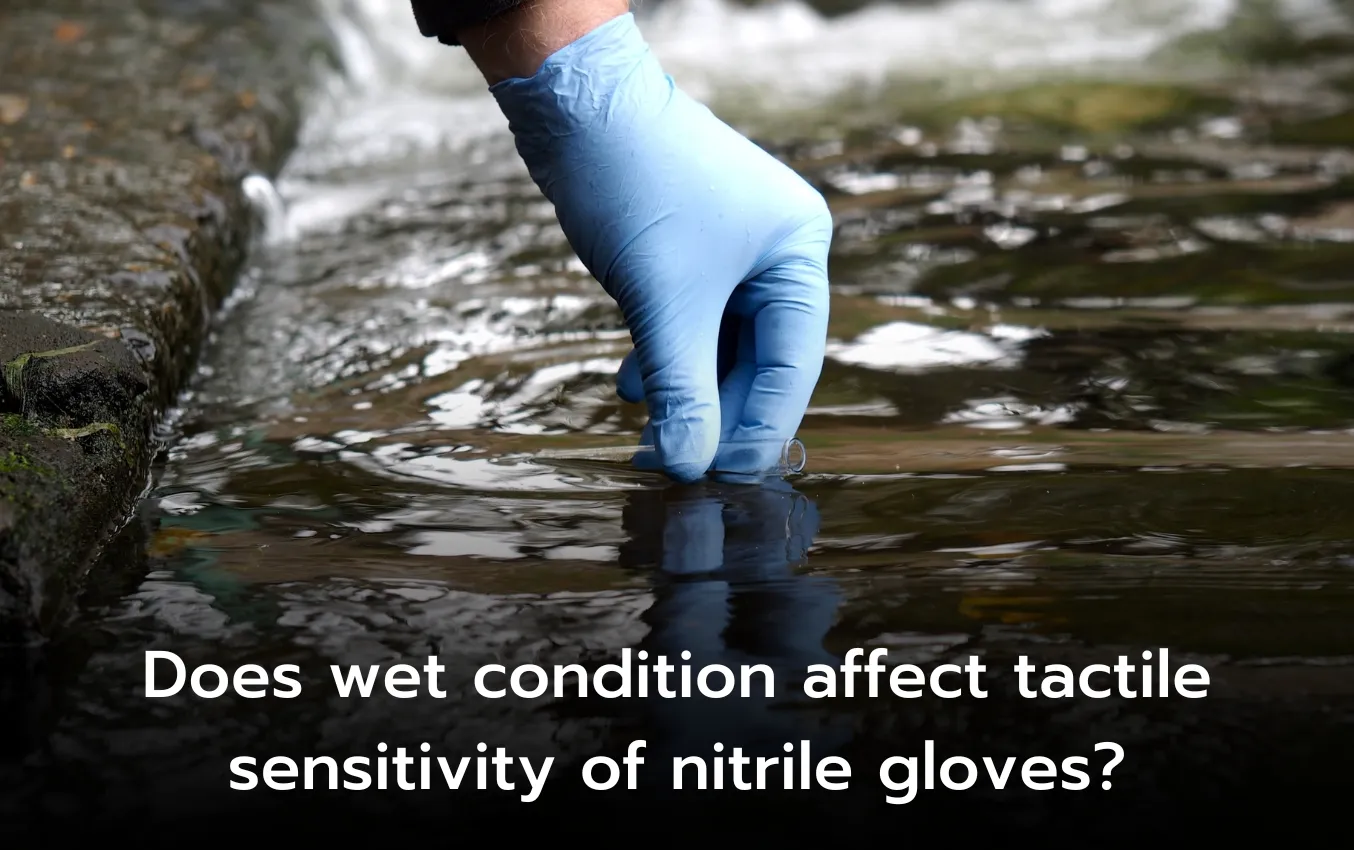You may wonder how wet conditions impact the tactile sensitivity of textured nitrile gloves in comparison to smooth nitrile gloves. Textured nitrile gloves are designed to provide better grip in wet conditions, but this feature may slightly reduce tactile sensitivity. On the other hand, smooth nitrile gloves offer superior sensitivity but lack the enhanced grip of textured gloves. Understanding the trade-offs between tactile sensitivity and grip can help you choose the most suitable gloves for your specific tasks. Let’s investigate into the science behind this to uncover the best option for your needs.

The Benefits of Textured Nitrile Gloves
Enhanced Grip and Friction
Grip and stability are crucial in wet conditions, where smooth surfaces can pose a risk of slippage. Textured nitrile gloves have better grip and friction due to their textured surface, which helps prevent accidents when handling wet objects.
Improved Dexterity and Control
Textured nitrile gloves provide improved dexterity and control, making them ideal for tasks requiring precision even in moist environments. The textured gloves help water to flow away, ensuring a better grip and reducing accidents.
A secure grip is vital in various industries, from healthcare to food handling, where precise movements are required. Textured nitrile gloves not only enhance dexterity but also provide better control, ultimately improving performance and safety in wet conditions.
Tactile Sensitivity Comparison
| Textured Nitrile Gloves | Smooth Nitrile Gloves |
|---|---|
| Textured Nitrile Gloves: A Slight Compromise For textured nitrile gloves, the texture on these gloves can slightly reduce tactile sensitivity compared to smooth nitrile gloves. However, the trade-off is often worth it for the improved grip and performance in wet or oily conditions. | Smooth Nitrile Gloves: Superior Tactile Sensitivity Slight compromises in grip and performance might be worth the heightened tactile sensitivity with smooth nitrile gloves. These gloves are preferred for tasks where fine motor skills and sensitivity are crucial. |
Tactile sensitivity is a crucial aspect to consider when choosing between textured and smooth nitrile gloves. While textured nitrile gloves may offer a slight compromise in tactile sensitivity due to their textured surface, they excel in providing enhanced grip in wet conditions, thus ensuring better control and precision. On the other hand, smooth nitrile gloves prioritize superior tactile sensitivity, making them ideal for tasks that require fine motor skills and sensitivity.
Moisture Management Strategies
Texture-Based Water Channeling
Even in wet conditions, textured nitrile gloves efficiently manage moisture by providing channels for water to escape, reducing the risk of slipping due to wetness.
Proper Sizing and Fit
Any effective moisture management strategy includes choosing the proper sizing and fit of textured nitrile gloves to ensure optimal performance.
Moisture management is crucial for maintaining a secure grip and preventing accidents when handling wet objects. Choosing textured nitrile gloves with the right size and fit is imperative for maximizing performance in wet conditions. Properly fitting gloves ensure that the texture effectively channels water away from the surface, enhancing grip and control.
Regular Glove Replacement
Replacement of textured nitrile gloves when they become saturated with moisture is crucial for maintaining grip and performance in wet conditions.
For instance, regularly changing gloves when they become saturated with moisture ensures that the texture remains effective in channeling water away from the surface. This practice reduces the risk of slippage and maintains an optimal grip when handling wet objects.
Now, in conclusion, wet conditions can slightly affect the tactile sensitivity of textured nitrile gloves compared to smooth nitrile gloves due to the added texture on the surface. However, the trade-off for improved grip and performance in wet or oily conditions often makes textured nitrile gloves the preferred choice. Proper moisture management, such as the design of channels for water to escape and regular glove changes when saturated, is important for maintaining grip and performance in wet conditions.
